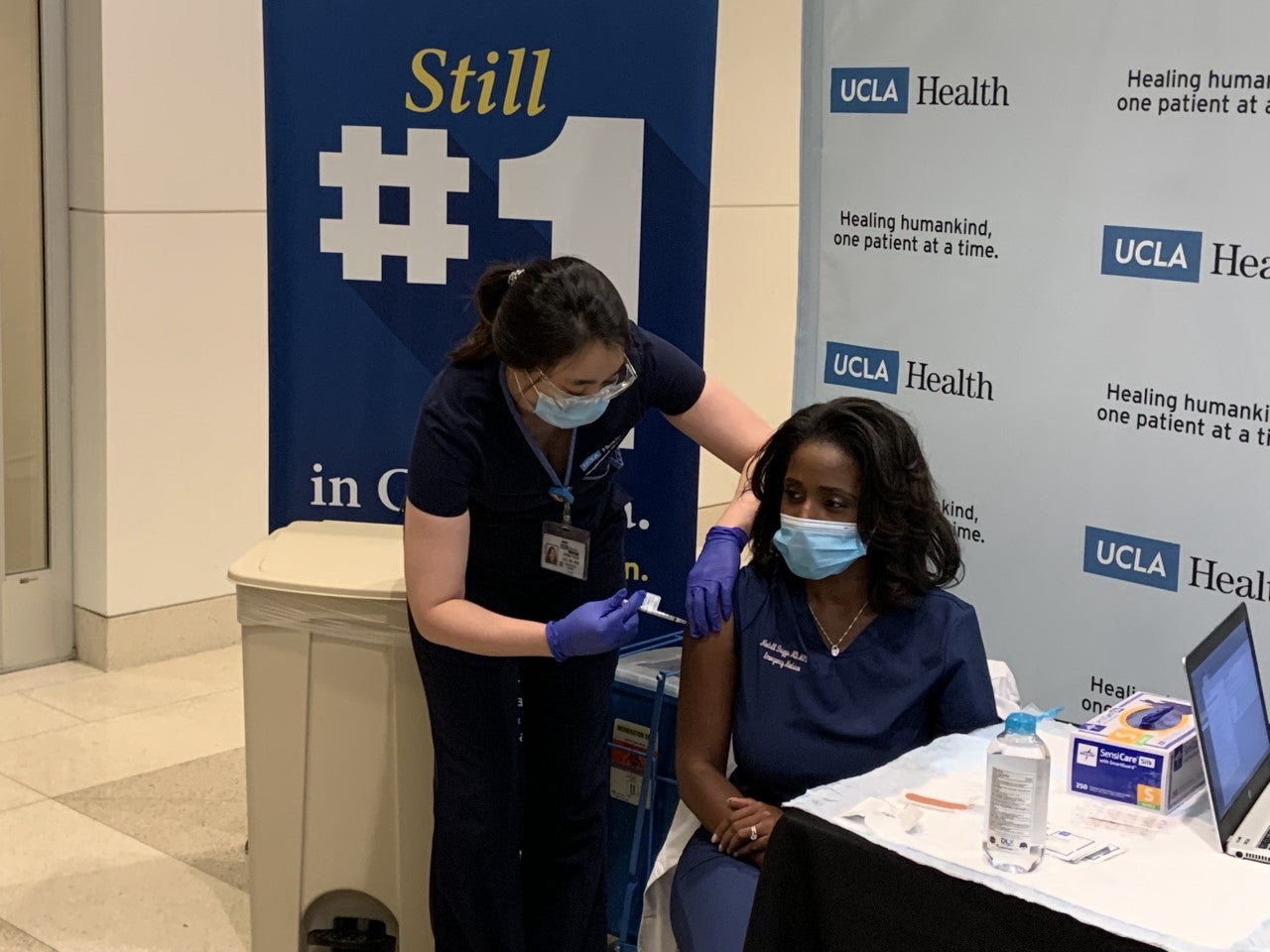Positive Messaging on Vaccines from UCLA Health

Photo Credit: UCLA Health
UCLA Health is rolling out its COVID-19 vaccination program looking at clinical risk and using a social vulnerability model and, at the same time, reassuring people about the safety and effectiveness of the vaccines.
The Los Angeles-based health system began vaccinating its front-line health care workers on December 16, 2020, at the Ronald Reagan Medical UCLA Medical Center. In a room decorated with Mylar balloons to mark the occasion, staff cheered as the first shots were administered. By January 14, more than 18,000 UCLA Health professionals had been vaccinated, with thousands receiving the COVID-19 vaccine every week.
Vaccine distribution. UCLA Health is prioritizing vaccination for employees of the health system, patients and other individuals in the community using guidelines developed by the Centers for Disease Control and Prevention, and California and Los Angeles County Departments of Public Health. The health system developed and uses a risk stratification process including age, pre-existing medical conditions, occupational risk and social vulnerability to invite those individuals who have the highest risk of mortality and morbidity associated with COVID-19 infection. In mid-January, the health system began offering vaccinations to UCLA campus employees 75 years and older. Employees over age 65 working on-site and remotely were in the next group, followed by a phased rollout for on-site employees. If employees have the opportunity to get the vaccine through a local health agency or provider, the health system is encouraging them to do so.
On March 1, all UCLA faculty and staff members, including student employees and those working in the campus’s pre-K–12 facilities, became eligible to receive vaccination as part of Phase 1B, Tier 1 of the state’s distribution plan. On March 15, that eligibility expanded to include people at a high-risk for severe COVID-19 infection. When supplies allow, UCLA Health invites these employees as well as patients who are age 65 and older, and patients 16–64 who work in education and childcare, emergency services, or food and agriculture, or are considered high-risk, to schedule their vaccination appointment.
When eligible UCLA Health employees are invited to schedule their vaccination, they receive an email from the health system and are required to complete an online education module about the vaccines. Patients also receive email invitations. If they do not have an email on file, an invitation letter is sent to their home. Rather than complete an education module, patients are asked to review the FDA fact sheets and other materials online before their appointment, and reach out to their doctor with questions.
UCLA campus regularly holds virtual town halls to share updates on its vaccination prioritization program and process and to answer questions from employees.
Communications and outreach. The health system’s website has a COVID-19 Vaccine Information Hub with details on its vaccine distribution plan and eligibility, along with fact sheets on each COVID-19 vaccine offered and a list of frequently asked questions. Frequent positive messaging is shared by the health system on its website and social media channels to correct any misinformation about the vaccines and encourage people who may be skeptical about vaccination.
Content on the health system’s social media channels poses a variety of vaccination questions, encouraging people to click through and “learn from the experts” about #COVID19vaccines.

